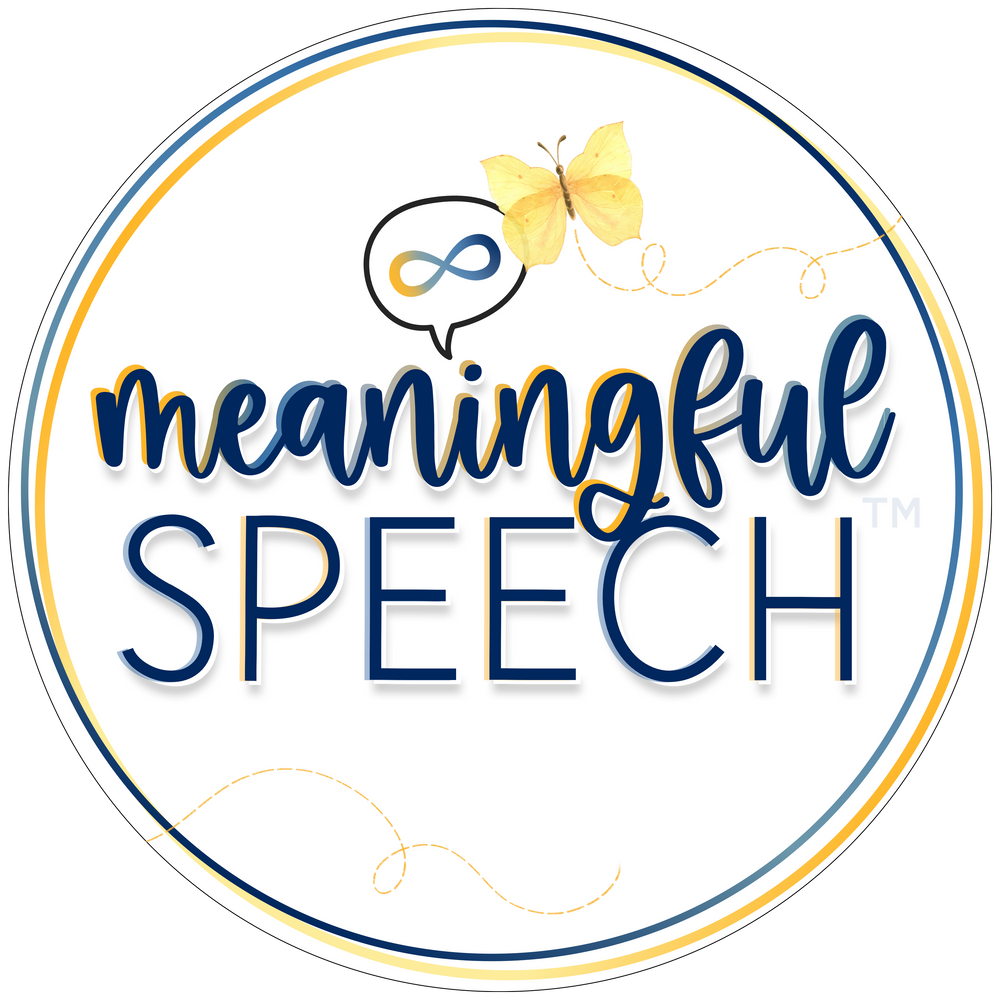Why does my child or client only use transactional language?
Feb 19, 2025
Are you parenting or supporting a child who communicates mostly with transactional language? They tell you what they want or need, but it doesn’t go much further than that. Let’s talk about why this might be the case and what you can do.
Why might this be the case?
In many educational and therapeutic settings, professionals and educators are focused on single words and getting kids to ask and answer questions. This focus is often even more intense when working with neurodivergent and autistic children.
But here’s the problem: many of these children develop language differently. They follow a gestalt language development process, meaning they begin acquiring language in inflexible, intonationally defined chunks rather than flexible, referential single words (analytic language development). When we focus on single words and teach language to gestalt language processors rather than support language development, we often see children using what we call transactional language—also referred to as survival or functional language.
Why Is This a Problem?
Transactional language may be useful for meeting basic needs, but it doesn’t support gestalt language processors in becoming self-generated, self-motivated communicators. It doesn’t help children express their thoughts, emotions, or interests beyond requesting and responding. When we focus on teaching single words or language, we limit their natural language development..
What Can We Do Instead?
The shift starts with us, not the child. Here’s how we can better support natural language development:
- Stop pushing single words and drilled responses. Instead of drilling questions and answers, or focusing on increasing a child’s vocabulary with single words (which is not what our gestalt language processors need), instead we want to model language naturally without expectation. Modeling whole phrases rather than single words or taught language.
- Prioritize commenting and narrating. Talk about what’s happening around you from a joint perspective or the child’s perspective using whole phrase models. Describe actions, feelings, and experiences without expecting a response. This models natural language and gives children access to meaningful phrases they can internalize.
- Meet them where they’re at. Consider where a child is at in their language development. If they’re a gestalt language processor, what stage are they mainly in? We cannot rush this process.
- Embrace silence. Sometimes, the best thing we can do is pause and allow space for a child to process language at their own pace. This allows us to hear a child’s true spontaneous language, rather than prompted or scripted responses.
- Follow their lead. Instead of directing interactions or sessions, observe what the child is interested in, make what they’re interested in accessible (use the rule of 3 so you don’t overwhelm!) and allow them to take the lead. Whether they are spinning or lining up a toy, watching a favorite YouTube video, or engaging in sensory play, join them and model language based on the stage they’re mainly in.
- Be patient and trust the process. Gestalt language processing follows predictable stages (although they aren’t always linear) just like analytic language development. We need to figure out which stage a child is mainly communicating in and support them based on where they’re at. We do this through spontaneous language samples and scoring using the Natural Language Acquisition (Blanc, 2012) protocol.
Want to learn more about supporting gestalt language development?
- If this resonates with you, we invite you to start by enrolling in our FREE masterclass on echolalia and child-led therapy. Over 33,000 parents and professionals have already enrolled for free.
- There are many free podcasts, webinars and articles to get you started. A comprehensive list of resources can also be found on our website.
- Consider taking the Meaningful Speech course to learn more about how your child or client processes language, how you can help support them from echolalia to self-generated (original flexible) language, child-led therapy, and neurodiversity-affirming practices. Looking for something shorter? We have a 1-hour introductory course perfect for extended family, daycare or school staff.
- Consider enrolling in our free Beginner’s Guide to AAC for GLPs or dive deeper into the topic by enrolling in our self-paced AAC + Gestalt Language Processing course. It will teach you how to identify, evaluate and support gestalt language processors who use AAC or who you think might benefit from AAC.
- Look for a speech-language pathologist (SLP) who "gets it" and can help you in supporting your child's language development. Check out our registry for SLPs who understand gestalt language processing and child-led therapy.
- Want to learn more about starting a niche private practice or using digital resources to support gestalt language processors? We have 1-hour webinars available on both topics HERE.
